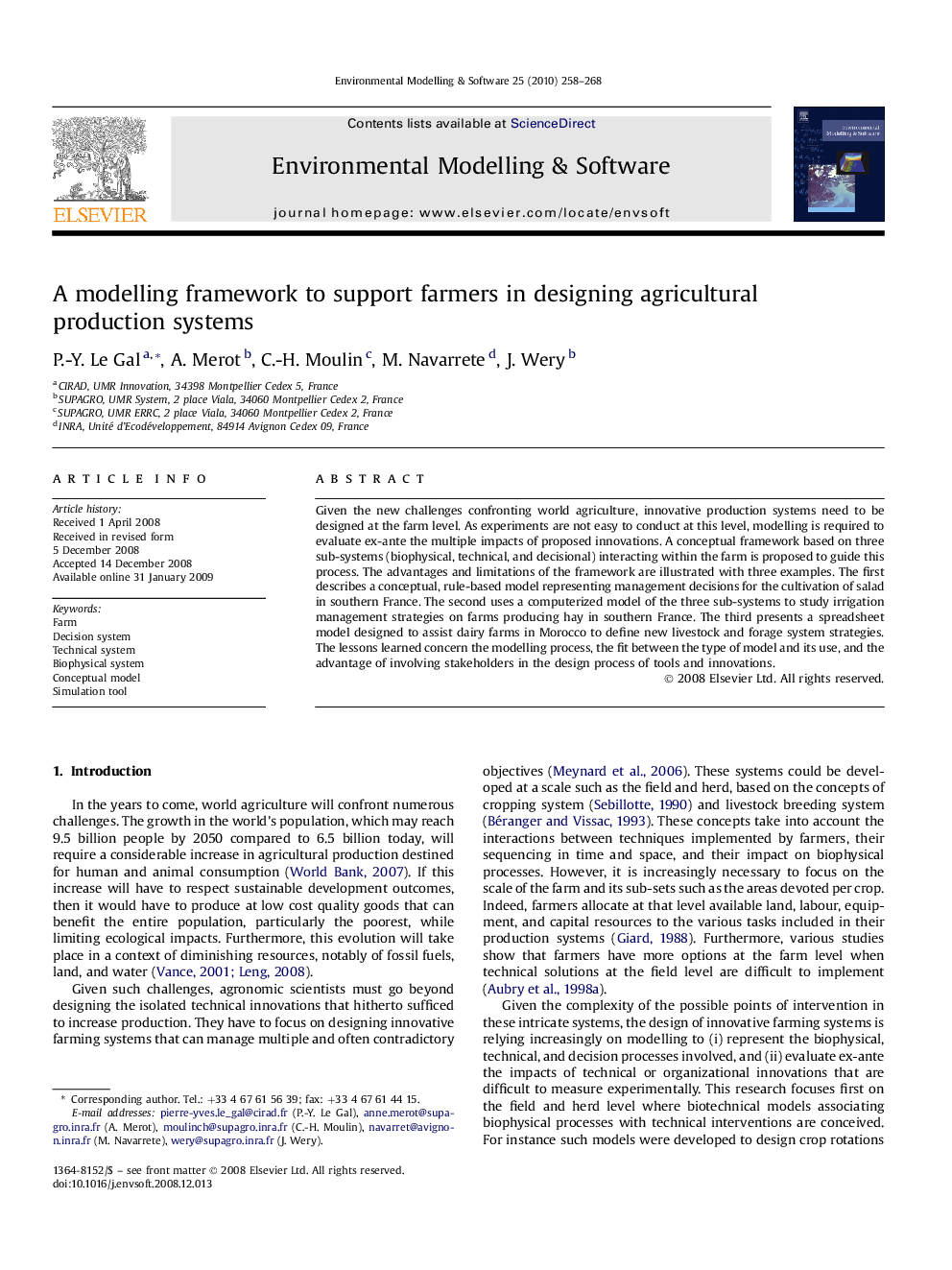| Article ID | Journal | Published Year | Pages | File Type |
|---|---|---|---|---|
| 570293 | Environmental Modelling & Software | 2010 | 11 Pages |
Given the new challenges confronting world agriculture, innovative production systems need to be designed at the farm level. As experiments are not easy to conduct at this level, modelling is required to evaluate ex-ante the multiple impacts of proposed innovations. A conceptual framework based on three sub-systems (biophysical, technical, and decisional) interacting within the farm is proposed to guide this process. The advantages and limitations of the framework are illustrated with three examples. The first describes a conceptual, rule-based model representing management decisions for the cultivation of salad in southern France. The second uses a computerized model of the three sub-systems to study irrigation management strategies on farms producing hay in southern France. The third presents a spreadsheet model designed to assist dairy farms in Morocco to define new livestock and forage system strategies. The lessons learned concern the modelling process, the fit between the type of model and its use, and the advantage of involving stakeholders in the design process of tools and innovations.
